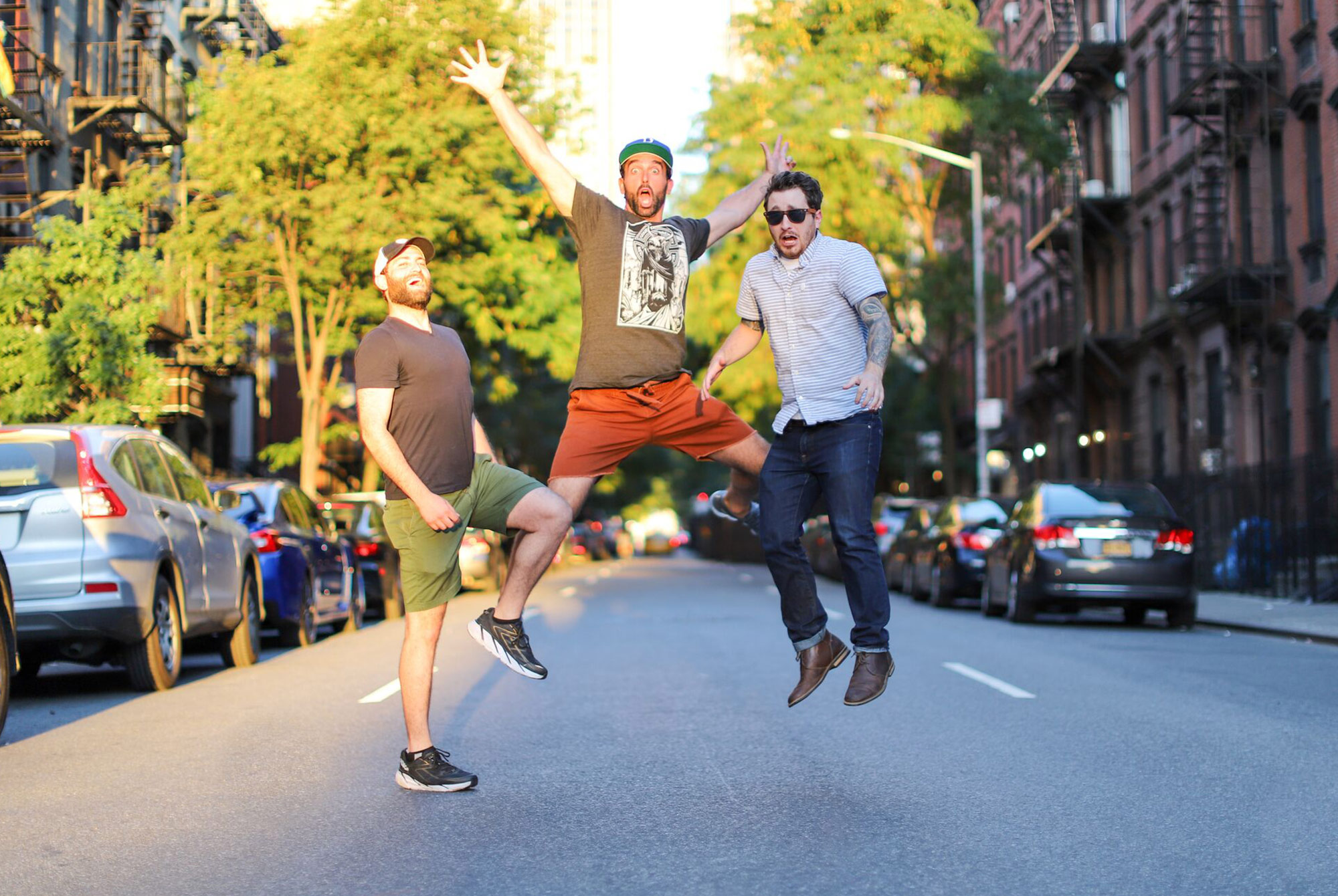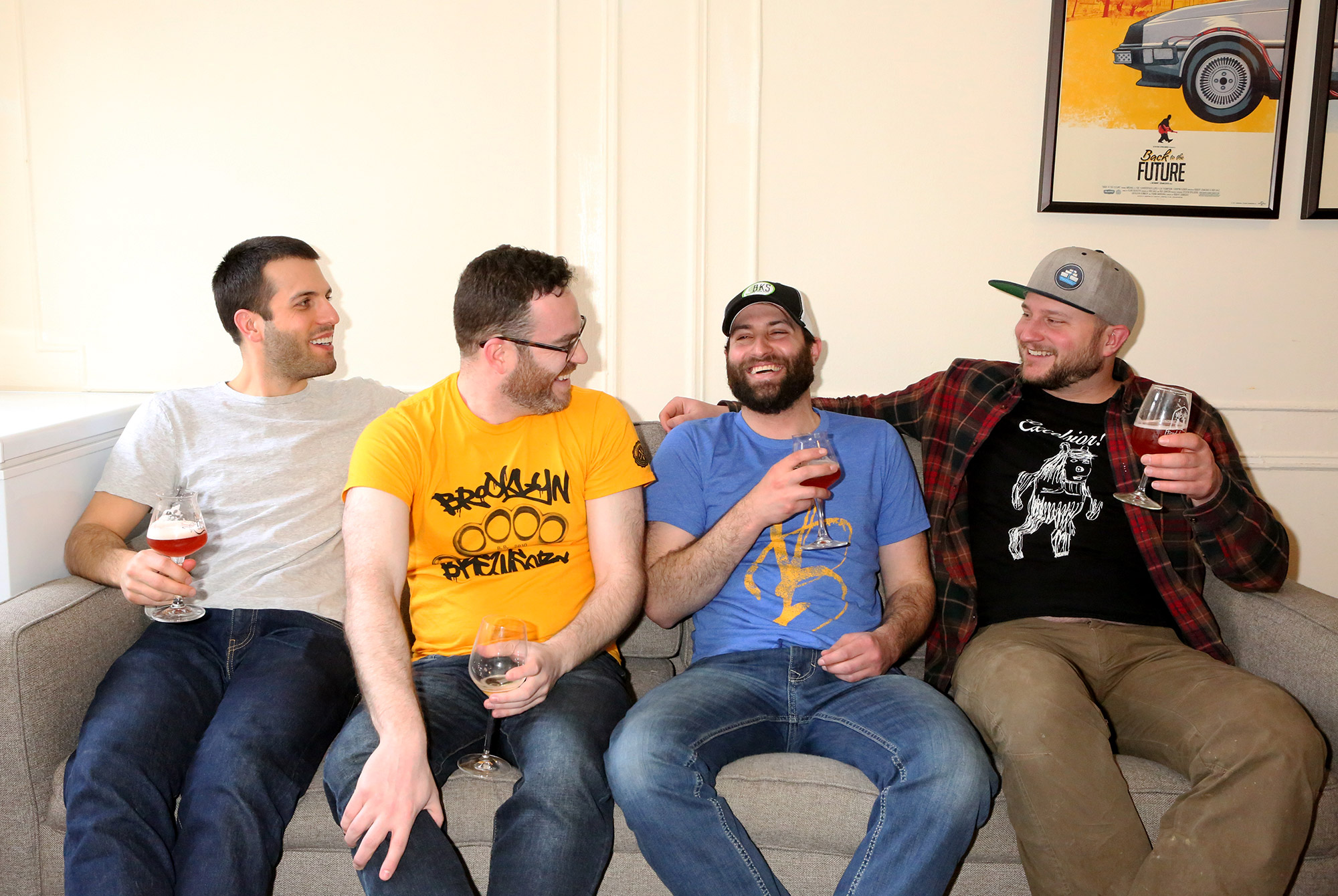The Back to Basics series brings professional brewers from around the world back to a place where most of them first fell in love with the art of brewing: homebrewing. For each chapter, I, along with some of my favorite homebrewers invite a new professional brewer into our brewhouse to discuss the route that got them to where they are today.
Today I am brewing with Dave Martin a local homebrewer and Kyle Harrop, the man behind Horus Aged Ales to discuss his journey from homebrewing to professional brewing.
On October 26, Horus Aged Ales will be at Spooky Brews Halloween Party and Craft Beer Fest in Boston, MA.
It’s an early morning on the east coast as Kyle arrives. He looks slightly disheveled, but who wouldn’t be after flying across the country for three collaborations and two events in three days? Especially when brewing is only a side gig and your fulltime job as an accountant for an aerospace engineering company is even more demanding.
He’s carrying a case of batch 1 of his experimental stout Big Bertha. He’s planning to pour it the next night at a tap takeover event at As Is. While today’s brew day is the biggest beer Dave or I have ever brewed, it’s just another day for one of the busiest people in craft beer.
For the Back to Basics series, we aim to either recreate a beer from our guest’s past, something our guest always wanted to brew, or just a beer that represents their style. A few months back, Kyle sent a group text to me and Hop Culture Founder, Kenny Gould. “If we go big, my vote is for an English Barleywine or Imperial Porter.” Having never brewed a Barleywine before, I figured what better time than now to brew one of my favorite styles.
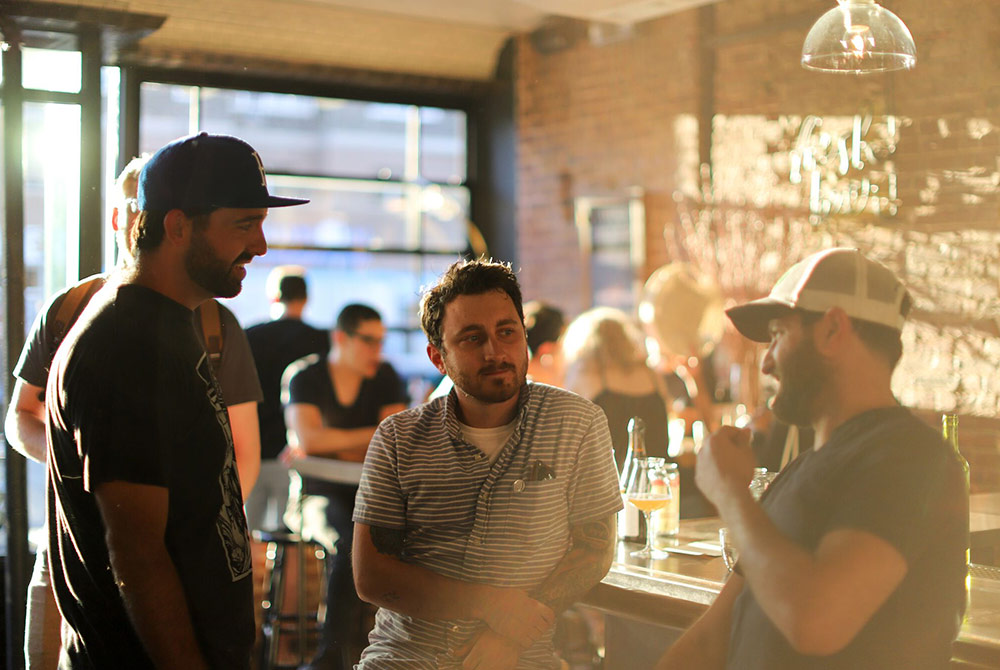
Photography by @NomsandBeer
Our recipe started out with a base created by Kyle but we didn’t want to straight up re-brew something. So we made several tweaks to the ingredients. Next, we added our own local spin; since Horus is known for his barrel project, we decided to procure a 5-gallon bourbon barrel from Kings County Distilling.
It’s 8:30 a.m. when we first mash in—we are doing a double mash.
We heat our water to about 168 degrees before pouring it over the grains in our mash tun. The smell of sweet, bready malt overtakes our small brewhouse, reminding Kyle of when his parents first taught him about homebrewing.
“My parents, Bob and Maureen, were homebrewers for as long as I can remember,” Kyle says. He remembers his hometown of El Segundo, California as a craft beer wasteland until about 2012. With limited offerings outside of Sierra Nevada, Kyle’s parents decided they would create their own options. Kyle remembers his Dad’s love for spicy food being translated into the beers he was brewing at the time. “I remember seeing my dad put habaneros, jalapenos, and other spicy adjuncts into bottles of lagers and pale ales,” he recalls. “While that wasn’t something I enjoyed personally, it was then that I realized how cool brewing could be because you can make something completely tailored to your preferences in a variety of different ways,” he continues.
However, it wasn’t until college that Kyle truly caught that homebrewing bug; he tried to clone Goose Island’s Honkers Ale. “I remember thinking how cool it was to watch the color of the liquid change during the boil, becoming darker slowly,” he recalls. “The smell was familiar, like what I used to smell in my parent’s kitchen,” he continues.
For Kyle, that first brew day went smoothly, at least until the next morning. “When I woke up the next morning, I walked into a gigantic mess, as the airlock and stopper had blown off and there was a puddle of liquid on the floor,” Kyle says. He had filled his fermenter to the top, leaving no space for fermentation, all without adding a blow-off tube. Luckily for Kyle, his beer was not ruined and a few weeks later, he was able to bottle and try his first creation. “While it was not nearly as good as Honkers or a lot of the other bitters I had tasted, it was palatable and I made it with my own hands,” Kyle says. “That was when I started becoming fascinated with brewing,” he continues as we near the end of our mash.
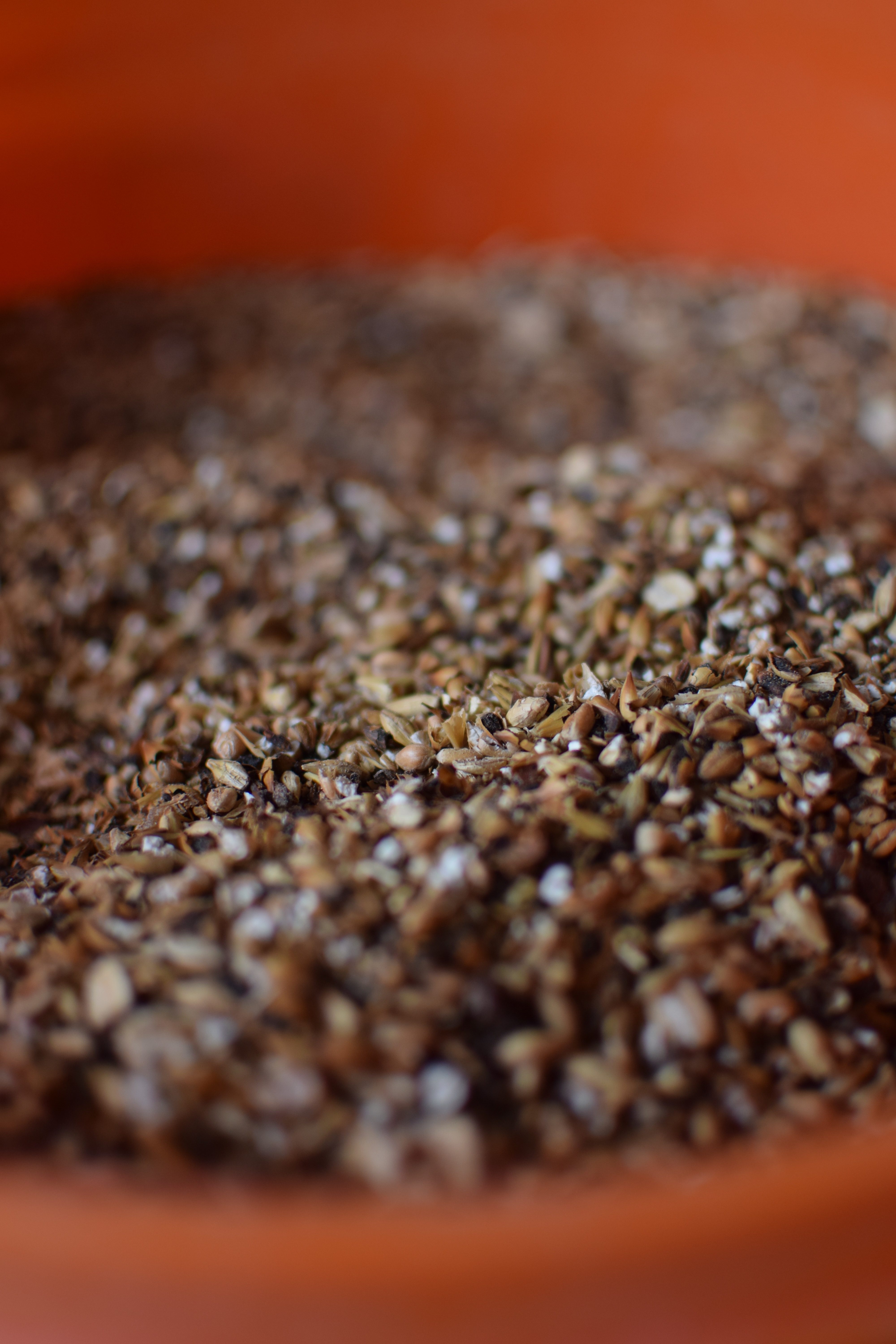
Photography by @mindfulales
The next step in our day is blending our two mashes into our kettle for the boil. The aim is to boil for three hours today, with several additions, including some Belgian Candi Syrup. Since the volume of our wort is too large to boil down in a single kettle, we decide to improvise a little, transferring portions of the wort into a separate kettle. The hope is that by having the two smaller volumes, we will have a more vigorous boil, and be able to boil down the wort faster before blending the wort for the final hour. For us, the process requires a lot of experimenting, but that’s what Kyle loves about brewing.
“I learned a lot from that first brew, but that was an easy style in my opinion,” Kyle says. He began to brew IPAs and Saisons before he went on a farmhouse ale kick where he pretty much brewed the same base beer with a different spice each time. From there he began fermenting Saison batches with Brettanomyces in separate fermenters during secondary. Next it was Lactobacillus on its own, but he didn’t like its distinct acidity. Kyle’s continuous urge for experimentation eventually led him to developing what he now refers to as his “house strain,” which he concocted by leaving berries out by a creek overnight. Over the past decade, Kyle has built on this strain repeatedly by propping it up and adding selective bottle dregs. Finally, this past year, Kyle was able to take his “house strain” to the professional level, inoculating over 50 oak barrels which will allow beer lovers to finally experience what has taken Kyle over a decade to perfect.

Photography by @NomsandBeer
But while creating your own strain of yeast is something common among advanced homebrewers, deciding to use that to open your own brewery is not. For Kyle, there were three events that pushed him into making Horus a true side gig rather than just a hobby. First, in 2014 he brewed a barrel-aged Imperial Stout for guests at his engagement party. “The reactions from everyone that tried it really hit home because I could feel how genuine everybody was about the beer and see their real excitement for it,” Kyle recalls. Second, in 2015, his wife Laurel helped her old USF classmate, Ben of Moon Collective to create what would become the logo for Horus, which is a profile of Kyle with a falcon on his head. The logo was inspired by his dad being a falconer and his mom’s affinity for all things Egyptian. The third, more serious occurred a few months after his daughter was born. “I went in for a routine physical with my local doctor and he felt a lump in my neck and scheduled me for a CT scan the following day,” Kyle says in a level tone. They had found a significant growth, which required him to have surgery the following week to have it removed. During the surgery, they ended up finding several others, some surrounding tissue. Thankfully a few days later, Kyle got the news that they were all benign. “I realized life can be really short and I wanted to pursue the thing I was so passionate about,” Kyle says. From there he decided he would never look back and went full speed ahead with Horus.
As we hit three hours into the boil, Dave kills the burner as we start running water through our wort chiller to allow the beer to cool down. Unfortunately, this is going to take a little longer than normal as the groundwater isn’t that cold. While we wait, I ask Kyle one of the questions that has been on my mind since I first heard his name: Why and how did he do all those collaborations the past year, as a new brewery?
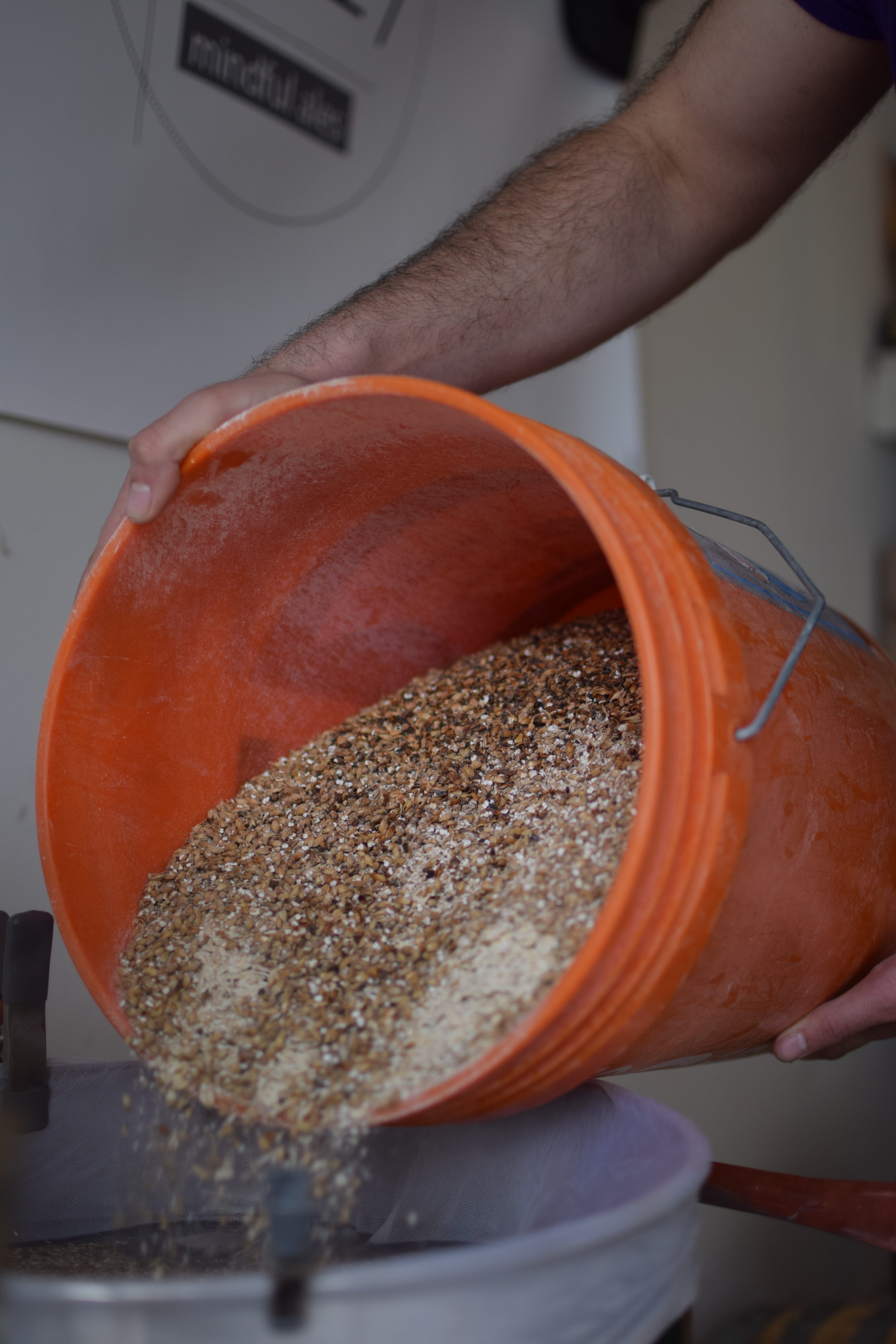
Photography by @mindfulales
“Originally I planned on doing 11 collaborations last year, which would make up my first bottled release Oceanside’s Eleven,” he says. The 11 were made up of breweries that were old friends of Kyle’s that he met either at festivals or local spots. It was something different from any other collab, taking 11 different non-barrel aged beers, blending different percentages of them, and throwing them into a Pappy Van Winkle barrel. However, with the success of collaboration beers such as Boss Tycoon with J. Wakefield and Frenched Toast with Great Notion, along with Kyle’s reputation as a homebrewer, it encouraged a lot of breweries to reach out.
The 11 turned quickly into 55. “There were a few trips towards the end of the year, where I traveled every day for a week straight, doing a different collaboration each day,” Kyle says. He knows however, he can’t maintain a similar pace forever. For Kyle, he will now have to shift his focus from collaborations to concentrate more on his own offerings. “I learned a ton from each one of these collaborations and they made me way more confident in my transition from homebrewer to a professional brewer,” he says.
Speaking of switching gears, we are now on the cold side of the brew day and ready to pitch our yeast.
As we see the temperature hit 70 degrees, we know it won’t get much lower considering the heat wave we’re in, so Dave pulls the lever to allow our wort to fill our 6.5-gallon carboy. For our yeast, we went back and forth, eventually deciding on 1318 also known as London Ale III, which is a British Ale strain. We pour a little of the wort into a cylinder tube to check the gravity before pitching our yeast starter. Knowing our Original Gravity is 1.146 and where we expect the beer to finish, we should end up with a beer around 14 percent ABV after it’s time in our bourbon barrel.
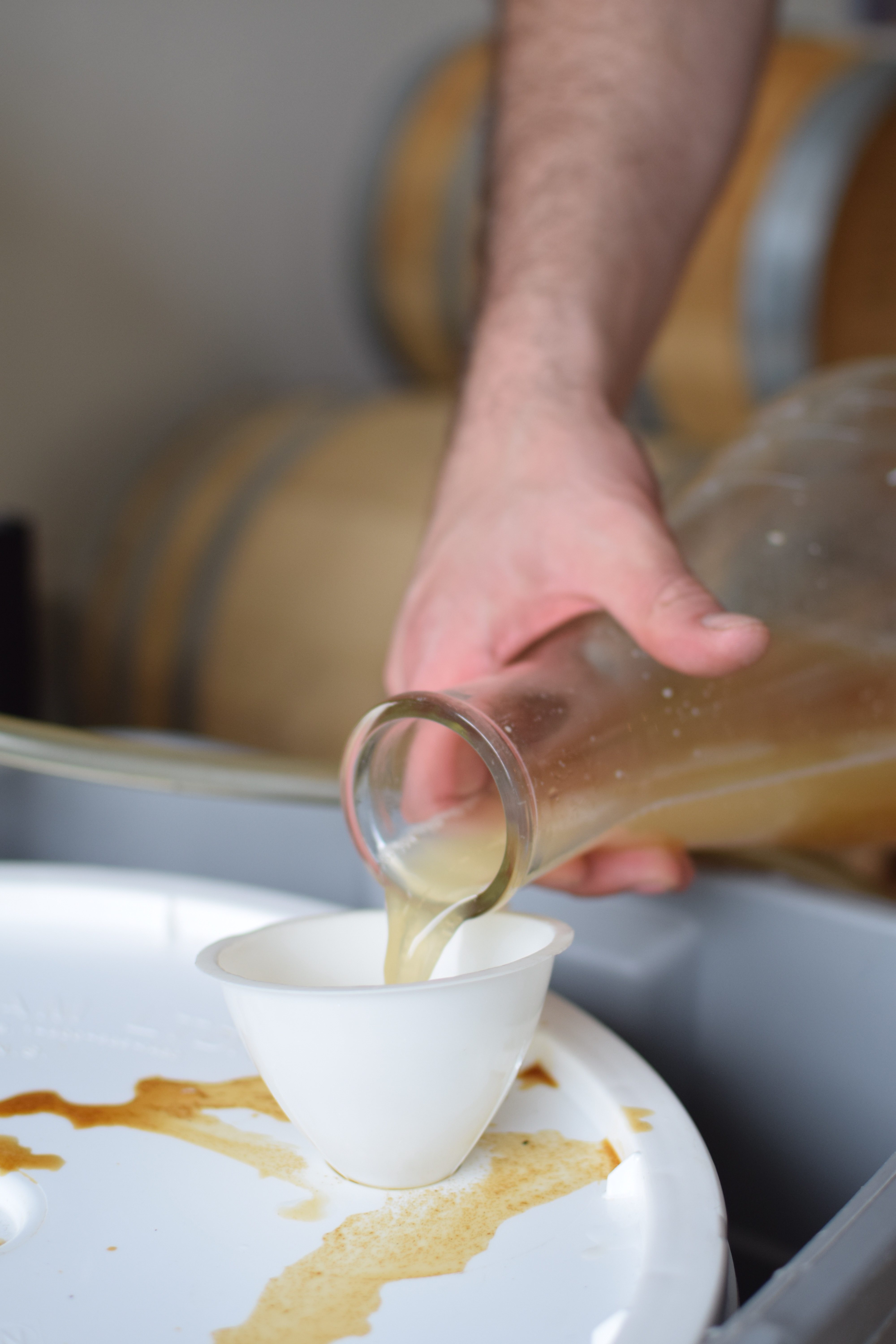
Photography by @mindfulales
As we wind down our day, we begin to clean up and break out some of the beers Dave and I had been working on ourselves recently. First Dave pours a Farmhouse Ale aged on Lavender, and then I pour an Imperial Stout aged on coffee I had recently bottled. As we sit there in our small brew house sipping the fruit of our labor, Kyle begins to talk about why he still loves the concept of homebrewing. “There are so many options and ways to brew even one particular style, whether it is grain choice, type of hops, water profile, carbonation level, adjuncts, or varietal of yeast,” he says. “Homebrewing is an ongoing adventure that challenges your abilities no matter what your level of brewing experience is, and even though I’m a professional now, I don’t think I’ll ever stop homebrewing.”
Liked this article? Sign up for our newsletter to get the best craft beer writing on the web delivered straight to your inbox.

